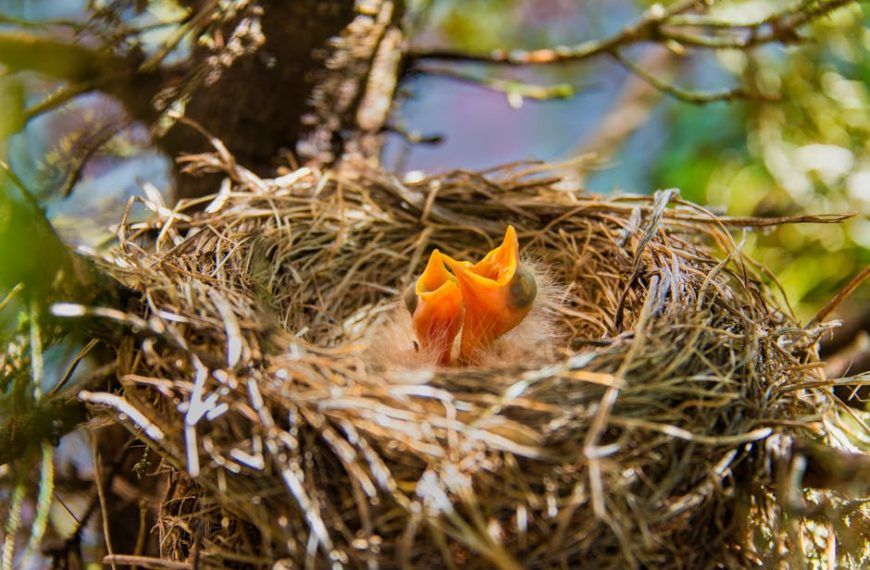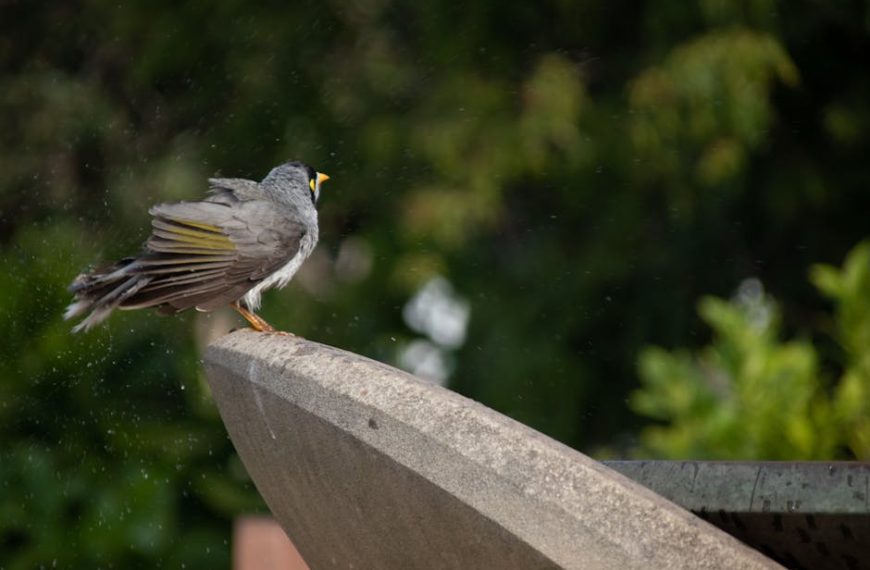Bird nests, meticulously crafted by feathered architects, encapsulate the complexity and fragility of avian life. Such nests serve as incubators for bird embryos, nurseries for growing chicks, and protective fortresses against potential threats. Nonetheless, there are key circumstances that prompt these creatures to forfeit their carefully constructed homes. Five primary factors frequently instigate nest abandonment: predator presence, human disturbance, nest parasitism, insufficient food availability, and unfavorable weather conditions. Understanding these elements empowers people to foster environments that are conducive to healthy bird populations.
Predator Presence and Nest Abandonment
Birds are exceptionally attuned to the presence of potential threats, thanks to their astounding visual acuity and acute environmental sensitivity. Spotting an approaching predator, they react instinctively to safeguard their offspring and themselves. However, this survival impulse can often lead to nest abandonment if the threat level is perceived as too high.
Different predator species instigate variable reactions in birds. Locally common predators, such as cats, dogs, foxes, or birds of prey like hawks, can routinely trigger bird departure.
Pro Tips: Curbing local predator populations is a formidable task, but simple measures can drastically lower the threat level for nesting birds. These include keeping pets indoors during nesting season and securing potential nesting spots from easy predator access.
Human Disturbance forcing Birds to Leave their Nests
Unfortunately, human actions significantly contribute to bird nest abandonment. From loud noise to sudden light changes and drastic habitat alterations, our impact on nesting birds is often inadvertent but detrimental.
Check for these common signs of human disturbance around bird nests:
- Recurring loud noises or sudden light changes.
- Evidence of habitat alteration, such as major landscaping or tree removal.
Best Practices: To mitigate our impact, maintain quiet and refrain from making drastic changes in environments where birds nest. Restricting nocturnal artificial lighting and maintaining natural habitats can provide a haven for nesting birds.
Nest Parasitism leading to Nest Abandonment
Birds are not immune to freeloaders. Some species, like cuckoos or cowbirds, are notorious for depositing their eggs in other birds’ nests, turning unsuspecting hosts into caregivers. This cunning strategy is commonly referred to as bird parasitism, and can often lead to hosts abandoning their nests entirely.
The decision to abandon or stay is a complex game of costs and benefits. While leaving the nest prevents energy wastage on rearing parasitic chicks, it equally involves the energy costs of constructing a new nest.
Pro Tip: The eradication of parasitic bird behavior is a complex issue. However, preserving natural habitats can mitigate its prevalence by preserving host species’ natural mechanisms of parasite detection and rejection.
The various intricacies of bird nest abandonment illustrate an intricate equilibrium, often poised precariously on the edge of survival. Gaining an insightful grasp of these factors empowers us to implement measures that respect and protect these miraculous feats of natural engineering. The following sections will delve further into these aspects, providing actionable takeaways for each scenario.
Insufficient Food Availability dictating Nest Abandonment
The availability of food plays a vital role in the lives of nesting birds, dictating whether their nest remains an abode or is abandoned. During the nesting period, parents are committed not only to procuring their sustenance but also catering to the demanding appetites of their young chicks.
An unexpected scarcity of resources can force birds to shift their priorities. Whether it’s due to prolonged harsh weather, loss of habitat due to human activity, or unseasonal disruptions to food availability, birds may opt to abandon their nest to seek better opportunities.
Best Practice: You can assist birds during food scarcity. However, remember that bird feeding should be provided as a supplementary source of food and should not replace their natural diet. Planting native trees that bear foods birds enjoy, serving a diverse variety of bird feed, and maintaining bird feeders hygienic can help.
Unfavorable Weather Conditions and Nest Abandonment
Mother Nature also plays a hand when it comes to bird nest abandonment. Extreme weather conditions can create inhospitable environments for birds, compelling them to abandon their nests and seek shelter elsewhere. Heatwaves, heavy rains, storms, or even an unpredicted snap of cold can effectively dislodge a bird from its nest.
Such conditions not only make it challenging for the adult bird – severe weather can also damage nests and create hostile conditions for young chicks that might not withstand such harshness.
Pro Tip: Providing birds with sheltering opportunities can safeguard them from extreme weather. Birdhouses can offer comfortable spaces for birds to nest and roost, particularly during harsh weather conditions. Ensure these shelters are placed in quiet, predator-free locations, allowing birds easy access.
Conclusion
Birds abandon their nests under various circumstances, with each decision driven by instinct and a keen sense of survival. By understanding the impact of the predator presence, human disturbance, nest parasitism, food scarcity, and weather conditions, we can better appreciate the countless challenges birds encounter.
Equipped with this knowledge, we can contribute to fostering an environment that is friendly to bird-life. Indeed, it is in our hands to ensure that a bird’s nest, a marvel of organic architecture, maintains its primary role – a sanctuary for growth and survival.
Key Takeaway:
- Predators such as cats, dogs, foxes, and hawks can pressure birds to abandon their nests, but measures can be taken to reduce local predator populations.
- Human disturbances, like loud noises and sudden light changes, often cause nest abandonment. Limiting our impact can provide a haven for nesting birds.
- Nest parasitism, where birds like cuckoos or cowbirds deposit their eggs in other birds’ nests, can lead to nest abandonment. Preserving natural habitats can help host species detect and reject parasites.
- Food scarcity, caused by harsh weather or loss of habitat due to human activity, can also result in nest abandonment. Proper bird-feeding practices can assist birds during these challenging times.
- Unfavorable weather conditions, including heatwaves, heavy rain, and storms, can make birds abandon their nests. Providing birds with sheltering opportunities can offer them protection during harsh weather.
Bird nests are intricate work of delicate craftsmanship, shaping the core of avian existence. Understanding the reasons for nest abandonment allows us to appreciate the complexity of bird life, whilst taking action to alleviate those pressures. With mindfulness, everyone can play their part in preserving nests and thereby supporting thriving bird populations.
FAQs
Q: How can I tell if a bird has abandoned its nest?
A: Prolonged absence of adult birds, along with signs of neglect such as cold eggs or chicks, are indicators of abandoned nests. However, be cautious as birds often leave the nest to forage.
Q: What should I do if I find an abandoned nest?
A: If you find a potentially abandoned nest, do not disturb it immediately. Monitor from a distance as the parents may return. If suspect of abandonment or danger, contact your local wildlife rehabilitation center.
Q: Can I prevent nest parasitism in my backyard?
A: Preventing nest parasitism can be complex. Promoting a balanced ecosystem and maintaining natural habitats in your backyard can help birds detect and reject parasitic eggs.
Q: Can feeding birds in my yard lead to nest abandonment?
A: If done correctly, bird feeding can support nesting birds, especially during times of food scarcity. However, ensure that it does not replace their natural diet and that clean, safe feeding practices are maintained to prevent disease.
Q: How can I help create a safer environment for birds to nest in my garden?
A: There are multiple ways: Provide natural cover by cultivating native plants, keep pets indoors during breeding season, avoid using pesticides, and offer safe, clean and weather-protected birdhouses for nesting.
We hope you enjoyed this article and found it helpful! Don’t forget to share it with others who may be interested and explore more informative posts on our website.












